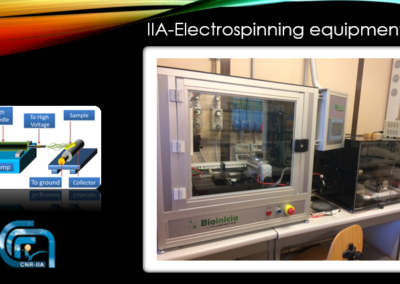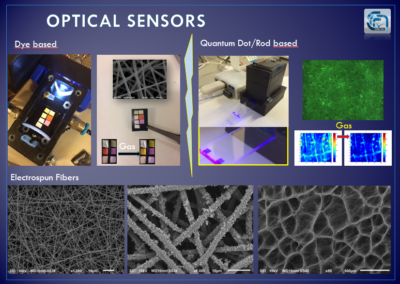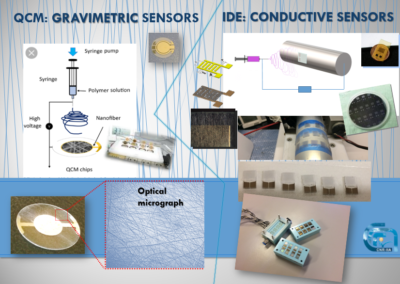The activities and instruments of the laboratory (≈60 m²) are mainly dedicated to the development and characterization of nanostructured matrices with different architectures and for multiple functions.
The materials, of bioinspired origin, are developed with a technology based on the principles of polymeric electrospinning (electrospinning) (Fluidnatek LE50-Bioinicia and Home-made devices) to obtain versatile and modular nanofibrose matrices in a plethora of architectures (gauze, woven / non-woven fabrics, nets, aligned fibers) and chemical combinations for multiple applications and in various ecosystems . Nanotechnology uses electrostatic forces to produce sub-millimeter-sized fibers (from 2nm to a few micrometers) to stretching uniaxial of a solution.
Being flexible nano-organized systems, they can be integrated into miniaturized devices (e.g. optical, conductometric and gravimetric nanosensors) or cover large areas of surfaces (e.g. in drug delivery systems, pollutant degradation, antimicrobial activity, etc.). They are activated both with "sensitive" agents (eg functional groups, nanoparticles, nanorods, nanotubes, etc.) for the development of selective and ultra-sensitive chemical sensors for gases and VOCs, with nano-biostimulating agents (e.g. in applications for the soil ecosystem), and with antioxidant and photocatalytic agents (e.g. antimicrobial activity and degradation of pollutants).
Further applications are for coatings, packaging, scaffolds, filtration systems, smart fabrics, electrochemical cells, etc.
As resources, the laboratory prefers the use of biodegradable polymers of natural origin and eco-compatible in "green" solvents, even if a wide range of materials have been subjected to electrospinning for the production not only of polymeric matrices, but also nanocomposite and ceramics (TiO2, ZnO, etc.).
The laboratory, in addition to being equipped with the basic equipment of a chemistry laboratory, is also equipped with:
- both bench and portable spectrophotometry, atomic force microscopy, optical and fluorescence microscopy, potentiostats, electrometers, incubation ovens, calcination ovens, UV-500W curing lamp, refrigerated benchtop centrifuge, glove box, microviscosimeters, pH meters, analytical balances, technical balances, tilting plates, chemical hood, aspirated aramadi for bases and acids, spin coating, dip coating (home-made), contact angle instrumentation (home-made)
INSTRUMENTS
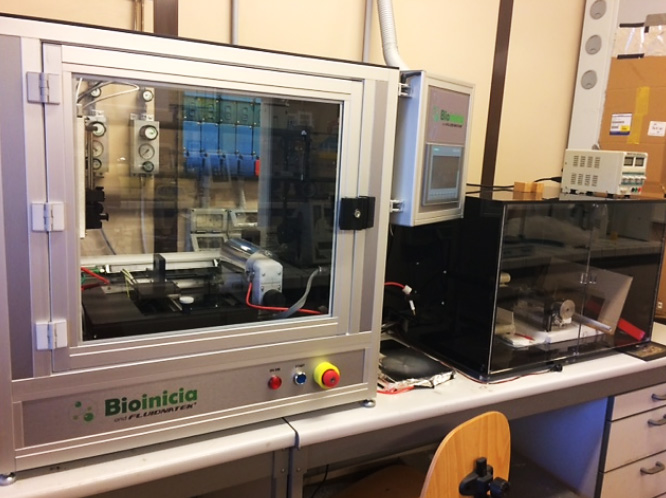
INSTRUMENTATION: Electrospray / Electrospinning equipment (Fluidnatek LE50 (Bionicia) + Homemade)
PURPOSE PURPOSE: Instrumentation for the controlled development of multifunctional nanofibrosis systems (electrospinning) and nanodroplets (electrospray), pure or nanocomposites, starting from polymer solutions (https://www.nanoscience.com/products/electrospinning-equipment/fluidnatek-le-50/). Electrospinning is a spinning technique that uses electrostatic forces to produce sub-millimeter-sized fibers (from 2nm to a few micrometers) to stretching uniaxial of a solution. Numerous applications: coatings, packaging, scaffolds, nanostructured sensors, filtration systems, smart fabrics, drug delivery systems, electrochemical cells, etc.
Contact person: Antonella Macagnano
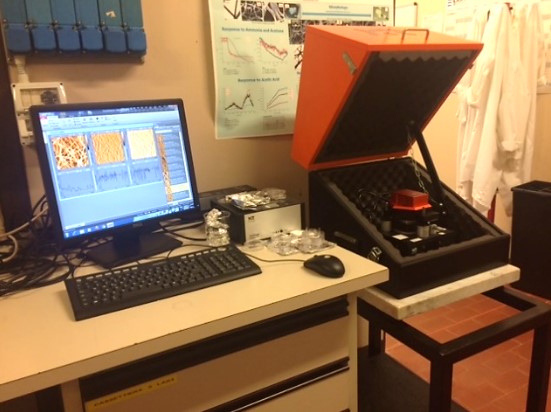
INSTRUMENTATION: NanoSurf Flex-AFM Atomic Force Microscope
PURPOSE PURPOSE: Scanning probe microscope that allows the high resolution (2 nm) visualization of sample surfaces, through the reconstruction of a three-dimensional image (topography) (https://www.nanosurf.com/downloads/Nanosurf-FlexAFM-Brochure.pdf)
Contact person: Antonella Macagnano
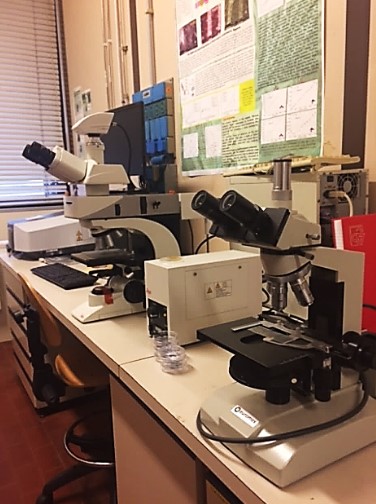
INSTRUMENTATION: Fluorescence Optical Microscopy (Leica 2700 DM, PhotoCamera DMC4500 + Euromex)
PURPOSE PURPOSE: Leica vertical microscope combines Leica optics with universal white light LED illumination. It can be used for all types of earth science inspections, scientific investigations, quality control and materials research. Ultra-bright high-power LED illumination offers a constant color temperature of 4.500 ° K for all methods: bright field, dark field, interference contrast, polarized light and oblique illumination. Provides true color imaging for every intensity level. Also developed for high-performance fluorescence imaging in material characterization, the fluorescence has Zero Pixel Shift, DIC, phase contrast and polarization technology. Euromex vertical microscope for viewing samples with transmitted light (e.g. biological preparations)
Contact person: Antonella Macagnano
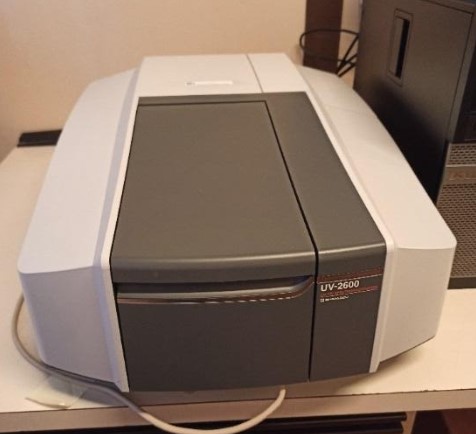
INSTRUMENTATION: Shimadzu UV-2600 spectrophotometer
PURPOSE PURPOSE: The UV-2600 spectrophotometer allows the use of broad spectrum applications. It features a single monochromator with a measurement capability up to 1400 nm wavelength, furthermore thanks to its integrated optical sphere, the measurement can be extended up to 2200 nm wavelength. As a light source it uses a deuterium halogen lamp, has a resolution of 0.1 nm and a scanning speed ranging from 4000 to 0.5 nm / min.
Contact person: Antonella Macagnano

INSTRUMENTATION: Hamamatsu L10290 Uv-Vis Fiber Light Source and Mini Spectrometer C10083CAH Hamamatsu
PURPOSE PURPOSE: This instrument has a deuterium lamp and a high intensity tungsten halogen lamp, capable of emitting an output spectrum ranging from 200 to 1600 nm of wavelength, sent via an optical fiber to the analysis system of our interest. Given its excellent optical capabilities, associated with its small size and light weight, it is suitable for many applications, such as: measurements in absorption spectra, measurements of film thicknesses, measurements on semiconductors, etc. The Hamamatsu mini spectrometer is used for visible and near IR (320 - 1000 nm) light analysis. It receives the incoming radiation through the use of an optical fiber and the resulting optical spectrum is transmitted to a PC, for data acquisition, via a USB port. It features a spectral resolution of 5nm. Its small size and compactness, associated with a high accuracy, allow a wide and easy use.
Contact person: Antonella Macagnano
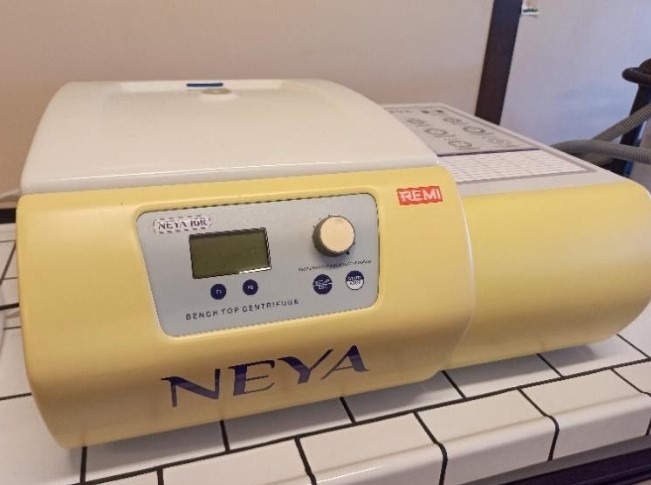
INSTRUMENTATION: NEYA 16R laboratory centrifuge
PURPOSE PURPOSE: The Neya 16R centrifuge used in the separation of elements with different densities or solid components from liquids, presents a control and balancing of the inserted materials with a speed adjustment. Equipped with a very quiet induction motor and a speed that can be set from 500 to 16000 rpm (revolutions per minute). This version also features a coupled chiller, with an operating temperature that can be set from -10 ° C to + 40 ° C.
Contact person: Antonella Macagnano

INSTRUMENTATION: Incubators, ovens, laboratory ovens
PURPOSE PURPOSE: The ovens in the laboratory (muffle, incubator, laboratory oven, etc.) have different ranges of operating temperatures and different capacity capacities. They are used, depending on the materials to be treated, for different uses, such as: drying, calcination, thermal desorption, etc.
Contact person: Antonella Macagnano

